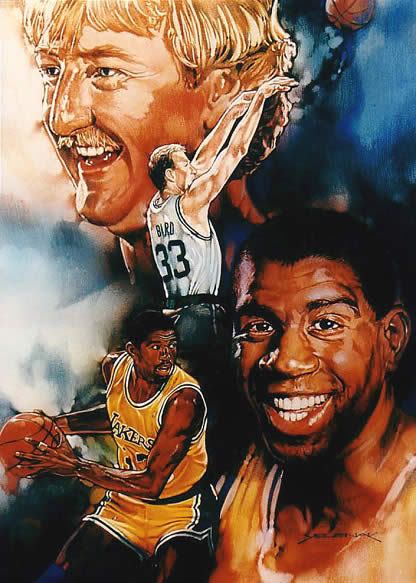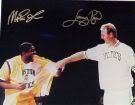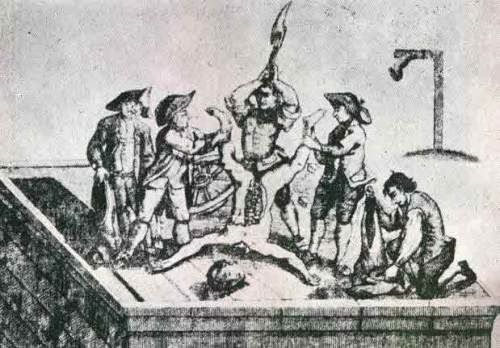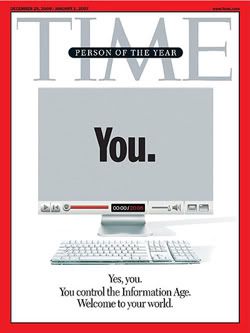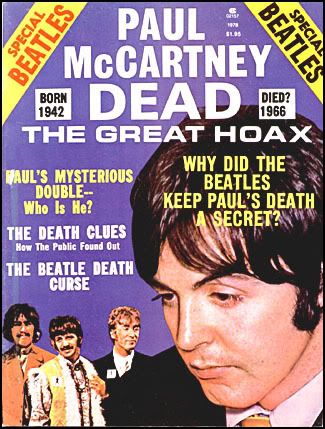 Nothing symbolizes the greatness of America more than the road trip. Growing up in the 1970s I went on at least one road trip with my (disfunctional) family every summer. My brother and I would travel cross country to Colorado, Minnesota, Wisconsin, Ohio, Kentucky, Missouri, some times with our biological father in his Econoline van or other times with my step-father and our mother in our Dodge Ramcharger. Each trip was an adventure, stops to go swimming, tubeing, bicycling, camping, fishing, to see ball games, to run around amusement parks, go-carting, hang at water parks, visit distant relatives, eat bologna sandwiches with Pringles and slurp 7-ups on the side of the road.
Nothing symbolizes the greatness of America more than the road trip. Growing up in the 1970s I went on at least one road trip with my (disfunctional) family every summer. My brother and I would travel cross country to Colorado, Minnesota, Wisconsin, Ohio, Kentucky, Missouri, some times with our biological father in his Econoline van or other times with my step-father and our mother in our Dodge Ramcharger. Each trip was an adventure, stops to go swimming, tubeing, bicycling, camping, fishing, to see ball games, to run around amusement parks, go-carting, hang at water parks, visit distant relatives, eat bologna sandwiches with Pringles and slurp 7-ups on the side of the road.By 1984 I obtained my driver's license and I began road tripping with my friends. We ventured off to state parks, county fairs, R.E.M. concerts, to the Iowa border (to a grungey strip club that let 17 year olds in), to the Wisconsin border to buy fireworks, to New Orleans' French Quarter, to tailgate parties in the parking lots of college stadiums. And by the 1990s I was taking road trips with girlfriends, romantic getaways to small tourist towns with antique shops, and ski resorts with almost-fine dining. My honeymoon in 2005 was a road trip to Knoxville Tennessee where my bride (now ex-wife) and I explored the winding roads and small towns around the Smokey Mountains, camped deep in the woods, hiked trails and listened to bluegrass music in smalltown bars.
The summer of 2011
 Now I have a 3 year old daughter and a 5 year old son and I can't wait to pass down the tradition of experiencing the wonders of the American road trip to them. This was the summer in fact that I was planning to take my curious little munchkins on their first ever American road trip adventure, through small towns, visiting arts and crafts fairs, music festivals and eating in ma and pa diners. But there is something different about America in 2011. Gas prices are well over 4 dollars a gallon - and in an economy crippled by wasteful government spending in recent foreign wars for oil, my dream of a summer road trip with my munchkins seems more like a fantasy. When I sat down to try and work out a budget for this road trip the reality hit me and it became too depressing to even think about: my kids would not be able to experience the great American road trip adventure. Not this year at least. Maybe never.
Now I have a 3 year old daughter and a 5 year old son and I can't wait to pass down the tradition of experiencing the wonders of the American road trip to them. This was the summer in fact that I was planning to take my curious little munchkins on their first ever American road trip adventure, through small towns, visiting arts and crafts fairs, music festivals and eating in ma and pa diners. But there is something different about America in 2011. Gas prices are well over 4 dollars a gallon - and in an economy crippled by wasteful government spending in recent foreign wars for oil, my dream of a summer road trip with my munchkins seems more like a fantasy. When I sat down to try and work out a budget for this road trip the reality hit me and it became too depressing to even think about: my kids would not be able to experience the great American road trip adventure. Not this year at least. Maybe never.
But wait a frickin minute. Wait one god-damned minute! This IS still America, right? The once great land where anything was possible? The nation that gave us Muhammid Ali, the electric blues, NFL football, Classic Rock, muscle cars, baseball cards and Indie films? The nation that put a man on the moon, created the internet, defeated Hitler, and invented the roller coaster and gonzo journalism. So why can't this be the nation to perfect the electric car and give rebirth to the dream of the American road trip?
Our country's addiction to oil was at one time a productive thing. After World War II oil promoted innovation, it got the country moving, it enriched our culture. But in october of 1973, for reasons too complex to get into here, Egypt and Syria attacked Isreal. Our President, Richard Milhouse Nixon, sided with Isreal which pissed off OPEC and resulted in an oil embargo on the US by the anti-Isreal, oil-exporting countries of the Middle East. This embargo caused a disastrous energy crisis in America which saw oil prices skyrocket from just $3 a barrel to $40 almost overnight. There were lines at gas stations as oil consuming Americans worried about whether they would have enough fuel to maintain their lives. The idea of an alternative to the gas-engine car started to become something worth serious considerion.
In 1976 in fact, three years after the Arab oil embargo, Congress passed the Electric and Hybrid Vehicle Research, Development and Demonstration Act (despite a veto by then-President Jerry Ford). The idea was to stimulate the production of alternatives to gas-engines. During Jimmy Carter's time in office (remember Jimmy Carter--the guy who put solar panels on the roof of the white house) government funds were provided that led to serious progress in the development of electric batteries. This progress lead to an enormous cultural and economic impact via the resulting gadget boom of the early/mid 80s; digital watches, pocket calculators, cameras, portable stereos, Sony walkmen, cell phones. As the gadget boom continued throughout the 80s it seemed like it was only just a matter of time until a viable electric car battery would be produced.
But then, just like that, development for the electric car in the USA came to a sudden standstill. In 1985 the price of oil began to fall again as the short-sighted Reagan Administration deregulated the oil industry. Oil companies were finding new petroleum sources in the North Sea, Alaska, Mexico and South America. Meanwhile OPEC lowered its prices in a successful attempt to increase U.S. addiction to oil and by 1986 the price of oil dropped down to only $15 a barrel. As Japanase auto companies encroached on the US auto market the idea of the electric car became even more marginalized. To compete with Japanese automakers the Reagan Administration was compelled to promote the consuption of cars with combustionable engines and totally dismiss alternative energy. On page 37 of Seth Fletcher's book Bottled Lightning, he writes:
 "Reagan came in and cut back energy efficiency and renewable energy programs by something like 80 percent," Elton Cairns, who at the time was working on advanced battery research at Lawrence Berkeley National Laboratory, told me. "All labs, including ours, suffered layoffs as a result. The reduction in funding occured something like overnight. That pretty well put an end to the significant involvement in DOE [Department of Energy] labs in battery and fuel-cell programs at that time."
"Reagan came in and cut back energy efficiency and renewable energy programs by something like 80 percent," Elton Cairns, who at the time was working on advanced battery research at Lawrence Berkeley National Laboratory, told me. "All labs, including ours, suffered layoffs as a result. The reduction in funding occured something like overnight. That pretty well put an end to the significant involvement in DOE [Department of Energy] labs in battery and fuel-cell programs at that time."Who Killed the Electric Car?
The documentary film Who Killed The Electric Car? picks up the story from there. In 1987 a solar powered vehicle created by an L.A. company called AeroVironment won the World Solar Challenge race across Austrailia. Law makers in California took note and began to see that emission free vehicles were very much a reality. This inspired the California Air Resource Board (known as CARB) to pass a mandate in 1990 that called for 2% of all cars sold in California to be emission-free by 1995. Car companies then began teetering between trying to comply to this mandate and working to get the mandate repealed. The technology to make a viable electric car was basically there. In fact within a short period GM came up with the EV1, an electric car that was fast, smooth, stylish, aerodynamic, emission-free and silent. It went up to 140 miles per charge. But the EV1 was not for sale. GM decided to make it available by lease only - for about $349 a month. Francis Ford Coppola leased one. Mel Gibson leased one. 24,000 customers from L.A. and NYC alone called in requesting to lease a EV1 before it even hit the market. Yet even as GM was producing this eco-vehicle with a huge demand, they realized that more profit was to be made in keeping with the gas combustionable engine vehicle business model. The gas engine was so much more complex in terms of working parts and therefore needed more maintenance which yielded incredible profits for car manufactures. The electric engine on the other hand required absolutely no maintenance at all. So the auto companies, in cahoots with the big oil companies, began infiltrating CARB in order to end the emmission free mandate (which was scheduled to be increased to a 10% requirement of all vehicles sold in California by 2003).
Since there was no common sense reason for CARB to repeal the mandate (other than it would line the big auto and big oil companies pockets), the auto manufacturers and oil companies had to manufacture a reason. Enter hydrogen fuel cell technology - a developing technology that big oil and big auto could use as a stalling tactic or a bait and switch to dupe Bill Clinton (and later Geroge W. Bush) into promoting the ideal of fuel cell cars. This fantastical idea of the fuel-cell vehicle allowed the oil companies and car manufacturers to argue that fuel cell was a better way to go than the electric car - with the added caveat of course that they needed a bit more time to develop fuel-cell technology. In reality however, it would take decades (if ever) to develop AND it actually cost one million dollars to make just ONE fuel cell car (whereas electric cars were going for around $32,000). This seemed like a hard sell, but to hedge their bets the oil and car companies got to the chairman of the California Fuel Cell Partnership, Dr. Alan Lloyd who was also elected as the chairman of CARB. And in 2003 CARB repealed the mandate. Then, in a gesture reminescient of Ronald Reagan having the solar panels removed from the white house roof upon moving in, GM and the other auto makers recalled ALL their electric vehicles - every last one of them - and trucked them out to the desert and had them literally crushed. Meanwhile, the Bush Administration's War for Oil in Iraq had been declared and was in full swing.

Yes We Can!
Upon winning office in 2008 Barrack Obama put an immediate emphasis on ending the USA's addiction to oil as he put forth historic new nationwide fuel-economy standards of a 35.5 mpg fleetwide by 2016 (a 40 percent increase over existing standards). Then, as Fletcher writes on page 115 of Bottled Lightning:
"...the current White House was more supportive of automotive electrification than any since Carter's. Obama worked an oblique mention of the Volt [GM's current electric car] into his first joint address to Congress as an example of the automotive technology of the future--and as a compelling reason to fund an American lithium-ion battery industry. And on March 19, 2009, he toured the Electric Vehicle Technical Center at Southern California Edison and declared a goal of putting one million electric cars on the road by the year 2015. He announced a $2 billion competitive grant program for electric-car battery and component manufacturers..." And the list goes on.
Today, there are a number of electric cars on the road. Chevy has the Volt, Nissan has the Leaf, Tesla has its Roadster. Meanwhile Ford, Toyota, Mitshubishi, Volkswagen, Audi and even Porsche have all announced plans to release an electric car by 2012. We will soon be seeing electric cars that can go 300 miles on a fully charged battery and which take as little as 5 minutes to recharge. You can charge the electric cars from your own home or at conveniently located charging stations (WalMart, are you listening?). The cost of an electic car has dropped to below $32,000 and considering the savings a driver will get from no longer having to put gas in their vehicle (with gas prices flirting with 5 dollars a gallon) it costs TEN times as much to travel in a gas engine vehicle than an electric vehicle - plus the savings from not having to get oil changes and engine maintenance. So there is no reason NOT to buy an electric car. In fact I see no reason why I should ever need to buy a gas-engine car again in my life. I can see a 21st century where the American road trip returns, where I can travel all day on about one dollar in energy costs. Where I can drive my kids from small town to big city showing them all the greatness and glory that is still America.
***
 For a history of the evolution of the electric car, check out
For a history of the evolution of the electric car, check out
Bottled Lightning: Superbatteries, Electric Cars, and the New Lithium Economy by Seth Fletcher. Overall, there are parts in Seth Fletcher's Bottled Lightning where you might need to have at least a high-school level physics class understanding of chemistry in order to get the gist of it, particularly the history and evolution of man's relationship to electricity. As this history unfolds it is interesting enough, but it begins taking on a more immediate relevence as Fletcher brings us into the early 1970s and the U.S. energy crisis. Fletcher does a workman's job of explainin how the electric car has gotten to where it is today and then explaining where it is going in the future. For this I give Bottled Lightening 3 out of 5 wagemannheads.
NEXT!
©2010 Rockism 101. All Rights Reserved





